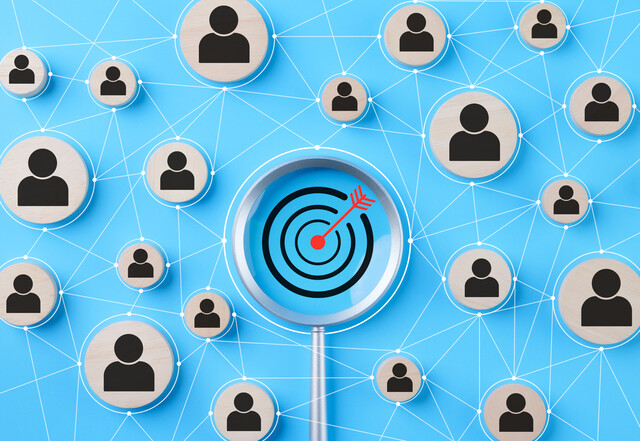Technology should not form the basis of your presentation, content should. If you expect to be using technology, make sure you know what tools are available in the location where you will be presenting.
Example: What if you have a fantastic, 46-slide presentation planned for a client, and when you arrive at their site, you realize they don't have a projector in their board room?
This has happened more than once, and it is fairly easy to avoid.
First, take the time to confirm what equipment you will have at your disposal, and make sure you know how to use it. If you are giving a presentation in your own building, you can just walk over to your scheduled room and check out the physical setup. If there is no projector screen, and no sound equipment, then you'll know you can't rely on music and PowerPoint. If you have scheduled a conference call, make sure the room is equipped with adequate phone technology.
If you will be presenting at a client site, make sure to speak with the person who has arranged your room so that you're sure to understand what will be available to you. You may end up in a space that was never intended for presentations, and may not have a good spot to project anything. If that's the case, wouldn't you rather know before you get there?
Once you know what your tech setup will be, see if you can take some time to practice with it. At your own location, you can do a practice run-through ahead of time to make sure you know how to use any teleconferencing or webconferencing software you might need. Also be sure you know how to turn on all monitors and projectors in the room. This might sound like a no-brainer, but many larger companies have communications setups that take on a life of their own after a while. You may know how to turn on all the equipment in Room 200, but find that Room 203 has a completely different setup that requires entry of five different sets of passwords. Worst case scenario, you would have to track down an A/V specialist and have your whole group watch the seconds tick by while you and the technician try to resolve the problem.
These problems are even more likely when you are giving a presentation in an unfamiliar location.
Example: An astronaut, a guest speaker at local elementary school spends half an hour trying to connect his laptop to the school's projector, only to eventually give up in frustration. The students missed out on cool space-flight pictures and first-person narrative, and the speaker had to improvise on the spot, and try to describe things the students had never seen.
To avoid this problem, see if your location will let you do a run-through a day or two before. If not, make sure you arrive early to set up so you have time plenty of time to troubleshoot if necessary.
In the previous section, we spent a lot of time talking about knowing your tools. Although this is important, it is just as important to understand yourself, and the presentation style that works best for you.
The training department of a Fortune 500 company has several full-time trainers on staff. They spend about 20 hours a week presenting in front of classes. They all have very different personality types. One is very serious and maintains a strict schedule during presentations. Another likes to follow tangents, and every one of his classes is different. A third is very outgoing and personable, and prefers to encourage class participation by tossing candy to class members who answer questions first. Each of these presenters has developed his or her unique style over the course of several years by refining, understanding their limitations, and maximizing their strengths.
Spend some time thinking about your strengths as a presenter. First, let's break down the possibilities a little more. Think about presentations you have given recently, and the areas where you think you really excelled. A few representative samples follow.
Organizational skills
Personality
Voice
Sense of humor
Audience involvement
You are the presenter who throws candy to attendees for answering questions. You also find ways to make sure the other people in the room are sharing their ideas. You may feel uncomfortable speaking for extended periods of time, so you like to find ways to draw others into the conversation. This strength keeps your audience engaged and usually results in the exchange of a wider range of ideas. Most attendees leave your meetings feeling energized and confident that they have accomplished something, and that the meeting was a good use of time.
Think about the descriptions above. Where do you fit in? Are you extremely comfortable in front of a group of people? Do you always find creative ways to get attendees involved? You may have a good idea of what your own strengths are, but just for research purposes, consider asking your friends and coworkers what their perception is. You may be surprised what you hear. You might have strengths you never even acknowledged before.
Once you understand your strengths, make sure you plan important presentations to take advantage of what you do well. If you are great with audience involvement, try to find ways to shape your presentations so that you always have those kinds of opportunities.
When you were reviewing the strengths listed above, you most likely spotted some categories where you know you're lacking. Maybe you have a terrific personality but you are short on technical expertise. This is a great opportunity for improvement: make time to research your subject and strengthen this area.
Who are you, really? When you strip away the PowerPoint, and forget the fact that your boss is sitting in the back of the room, and assume that your job is guaranteed for life so you can forget about ever getting fired, who are you? If you could skip back in time, to a point where you weren't all that worried about impressing anyone, say Kindergarten, and you were doing show-and-tell, and describing the really cool new toy you had talked your parents into buying you--how would you have talked then? Would you have put up a series of arguments in a straightforward bulleted list, or would you have explained all the really cool features of your new toy so that each child in your class got so excited they were all asking questions like, "Does it fly?" "Where did you get it?" "Can I play with it, too?"
The purpose of thinking back on a time when our presentations were less complicated is remembering who we are when we're just being ourselves. A lot of people want to use humor in a presentation, but for many of us, it just doesn't come naturally and it ends up feeling awkward. Others want to draw in audience participation, but they don't quite know how to handle it when it happens. Some of us can't stand to be the only person talking for an hour, so we find ways to shift the burden to the audience. Whoever you are under all the conventions and habits you have adopted over the years, whatever your natural presentation style is, understanding your inclinations can help you build a presentation that not only makes you feel comfortable, but allows your audience to pick up on your enthusiasm and get a whole lot more out of the experience.






























